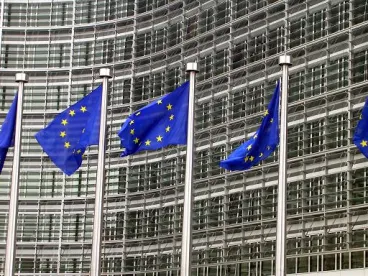First created in 1989, the European Union (EU) merger control regime has now been around for the better part of a quarter of a century and is a well-established fact of life for businesses involved in large-scale M&A transactions. During that time, the European Commission (the Commission) has firmly secured for itself a place at the top table of leading merger control authorities around the world.
It has been nearly a decade since the last reforms to the EU Merger Control Regulation (EUMR) were enacted in 2004. The Commission periodically reviews the EUMR to ensure that it takes account of evolving merger control practice and enables it to intervene efficiently and effectively in relation to potentially problematic transactions. In this context, the Commission has recently proposed a number of amendments to the EUMR – the most significant of which is a mooted extension of the Commission's jurisdiction to the review of acquisitions of non-controlling minority shareholdings (also known as "structural links").
Most structural links do not raise competition concerns. However, economic theory and the experience of other competition regulators suggest that structural links may in certain circumstances: (i) reduce competitive pressure between competitors; (ii) facilitate coordination among competitors; and (iii) in the case of vertical links, impede the access of competitors to inputs or customers.
While certain merger control regimes around the world (notably those in Germany, the United Kingdom and the United States) permit national competition regulators to review acquisitions of minority shareholdings, the Commission's jurisdiction is presently limited to the review of mergers and acquisitions by one economic entity of control, or "decisive influence," over another economic entity.[i]
To plug this perceived "enforcement gap," the Commission is proposing to bring the acquisition of minority shareholdings within the scope of the EUMR.
It has proposed three alternative potential methods of doing so:
-
A full notification system: Under this proposal the current mandatory, suspensory EUMR merger control regime would simply be extended to require prior notification and clearance of acquisitions of non-controlling minority shareholdings.
-
A self-assessment system: Under this non-suspensory system, parties would not be required to notify acquisitions of non-controlling minority shareholdings. However, the Commission would retain a discretionary right to "call in" transactions which might raise competition concerns (and potentially require "after the event" divestments).
-
A transparency system: Pursuant to this proposal, the EUMR would require "parties of aprima facie problematic structural link" to submit a short form notification to the Commission, but doing so would not prevent them from implementing the transaction. Again, the parties would face the risk of having to unwind the deal if the Commission concluded that it was anti-competitive.
For both the self-assessment and the transparency system options referred to above, the Commission is also considering the possibility of permitting parties to make voluntary, suspensory notifications.
Recent experience with minority shareholdings at both the EU and the national merger control levels suggests that the Commission may have a point in making its case for extending the scope of EU merger control to structural links.
In doing so, however, it is clearly mindful of the fact that any reform should not place an undue administrative burden on parties involved in transactions that are innocuous from a competition law perspective. After all, EUMR merger control can be a time-consuming, resource-hungry and, frankly, expensive exercise.
Should it ultimately be decided to extend the scope of the EUMR, the limits of the Commission's jurisdiction would need to be clearly circumscribed – regardless of which option is used. In order to ensure a high degree of legal certainty, experience with national merger control regimes suggests that clear objective tests linked to the level of shareholdings acquired (e.g. acquisitions of shareholdings of 10 percent or more as in the United States) are preferable to vaguer, subjective tests (e.g. acquisitions of "material influence" in the United Kingdom or "competitively significant influence" in Germany).
As regards the options presented by the Commission, a "full notification” system for structural links would provide for an arguably desirable high degree of legal certainty. It would, however, also bring a large number of innocuous "paper filings" into the EUMR fold – an apparent direct contradiction of the Commission's stated objective of ensuring smarter, better regulation and cutting down on such filings in other areas (e.g. in respect of the creation of joint ventures operating solely outside the territory of the EU).
With that in mind, the "self-assessment" and "transparency" system options would appear to be preferable options because they would be much less burdensome on businesses than a full notification system. However, such systems would potentially entail a significant degree of regulatory risk for parties acquiring minority shareholdings (i.e. when exactly is a structural link likely to be viewed as problematic from a competition law perspective?).
To enable parties and their competition counsel to self-assess adequately whether proposed structural links are anti-competitive, a comprehensive set of Commission guidelines would likely be required. However, while the Commission has issued detailed guidance on virtually every key area of its activities in the competition arena, past experience with such documents suggests that the Commission may be reluctant to delineate its jurisdiction too clearly for fear of inadvertently circumscribing powers which may, at some point in time, prove to be useful.
In the absence of "bright line" tests, it would take a prolonged period of trial and error (i.e. by way of case law) until parties and their advisors could properly self-assess whether contemplated structural links would be likely to be viewed as anti-competitive by the Commission and, therefore, best avoided (or, if possible, voluntarily notified). It is submitted that such a period of uncertainty would be undesirable, in particular in an area in which, by the Commission's own admission, "the number of cases creating problematic structural links seems to be rather limited."
Lastly, it should be noted that the proposed extension of the EUMR to minority shareholdings is not a measure which the Commission can introduce by itself – that decision is reserved to the EU member states which would need to agree to an extension of the Commission's powers. However, in making these detailed proposals, the Commission has got the ball rolling. Whether the member states will pick it up and run with it, ultimately, remains to be seen.
[i] While the Commission can currently review existing structural links as part of its analysis of an acquisition of control, it is powerless to intervene if such links are not connected to a transaction meeting the current control test.



 />i
/>i
